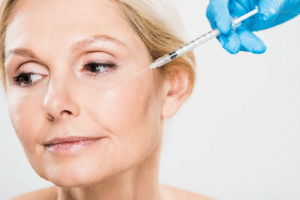
Understanding Mandibular Advancement Devices
A mandibular advancement device (MAD) is a custom-fitted oral appliance commonly used to treat snoring and mild to moderate obstructive sleep apnea (OSA). These devices work by repositioning the lower jaw (mandible) slightly forward during sleep. This forward position keeps the airway open, allowing for better airflow and reduced breathing interruptions.
Why Mandibular Advancement Devices Are Effective
Many people with OSA or habitual snoring experience breathing blockages due to relaxed throat muscles or the tongue falling back into the airway. A mandibular advancement device counteracts this by physically shifting the jaw to prevent these obstructions.
This jaw repositioning not only improves airflow but can also enhance oxygen levels throughout the night, reducing the number of apnea episodes. For individuals who struggle with CPAP machines or want a less invasive treatment, MADs offer a practical alternative.
Who Can Benefit from Using a Mandibular Advancement Device?
While these devices are not for everyone, they are particularly beneficial for:
-
Mild to moderate OSA patients
-
People who snore loudly but don’t have apnea
-
Individuals intolerant to CPAP therapy
-
Travelers seeking a portable sleep aid
-
Those preferring non-surgical solutions
Consultation with a sleep specialist or dentist trained in sleep medicine is crucial to determine suitability.
Types of Mandibular Advancement Devices
There are two primary types:
1. Custom-Fitted Devices
These are professionally made using dental impressions and provide the most comfort and effectiveness. They are often adjustable, allowing gradual forward positioning of the jaw for optimal results.
2. Over-the-Counter Devices
These are generic mouthpieces available online or in pharmacies. While more affordable, they lack the precision of custom options and may be less comfortable or effective.
How Mandibular Advancement Devices Compare to CPAP
Though CPAP (Continuous Positive Airway Pressure) is considered the gold standard for treating OSA, it’s not always the most user-friendly. Many patients abandon CPAP due to noise, discomfort, or difficulty sleeping with the mask.
MADs, by contrast:
-
Are quiet and compact
-
Require no electricity
-
Are easier to travel with
-
Have a higher compliance rate for mild cases
That said, MADs may not be effective for individuals with severe sleep apnea or those with complex airway anatomy.
Proper Fitting and Adjustment
A successful treatment outcome depends on how well the mandibular advancement device is fitted and adjusted. The process usually involves:
-
Taking dental impressions or 3D scans
-
Creating a mold tailored to your jaw alignment
-
Adjusting the forward movement of the jaw incrementally
-
Monitoring improvement via sleep studies
Some devices come with micro-adjusters to fine-tune the position, improving both comfort and therapeutic effectiveness.
Potential Side Effects to Consider
While generally well-tolerated, some users may experience side effects such as:
-
Jaw or tooth discomfort
-
Excess salivation or dry mouth
-
Temporary bite changes
-
Gum irritation
Most side effects are mild and resolve over time as the mouth adapts to the device.
Maintenance and Cleaning Tips
Proper hygiene ensures the device’s longevity and avoids oral infections. Daily maintenance includes:
-
Rinsing with warm water after use
-
Brushing gently with a soft toothbrush
-
Soaking in a denture-cleaning solution weekly
-
Storing in a ventilated case
Regular dental checkups are recommended to assess fit and oral health.
Sleep Quality Improvement With MADs
Studies have shown that many users of mandibular advancement devices report:
-
Reduced or eliminated snoring
-
Improved sleep quality
-
Less daytime fatigue
-
Fewer apnea episodes
-
Better partner sleep satisfaction
For individuals with positional sleep apnea—where symptoms worsen when lying on the back—MADs can be especially effective.
Combining MADs With Lifestyle Changes
To maximize the effectiveness of your treatment:
-
Maintain a healthy weight
-
Avoid alcohol before bedtime
-
Sleep on your side instead of your back
-
Quit smoking
-
Stick to a consistent sleep schedule
These habits, when paired with a mandibular advancement device, can significantly improve sleep-disordered breathing.
FAQs
What is a mandibular advancement device?
A mandibular advancement device is a dental appliance that moves the lower jaw forward to keep the airway open during sleep, commonly used to treat snoring and mild sleep apnea.
Is it safe to use MADs every night?
Yes, these devices are safe for nightly use if prescribed and fitted by a dental or sleep professional.
Can I use a MAD instead of a CPAP machine?
If you have mild to moderate sleep apnea and struggle with CPAP, your doctor might recommend a mandibular advancement device as an alternative.
Will a MAD fix severe sleep apnea?
Severe sleep apnea often requires CPAP or other medical interventions. MADs are typically most effective for mild to moderate cases.
How long does it take to get used to a MAD?
Most users adjust within 1–2 weeks, although minor discomfort may be felt in the beginning.
Conclusion
A mandibular advancement device offers a non-invasive, effective solution for snoring and mild to moderate obstructive sleep apnea. With proper diagnosis, fitting, and follow-up, many individuals experience significant improvements in sleep quality and overall health. If you’re looking for an alternative to CPAP or seeking relief from chronic snoring, this might be the solution you’ve been searching for.





